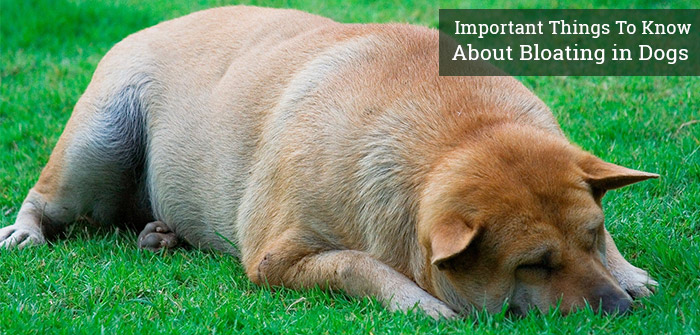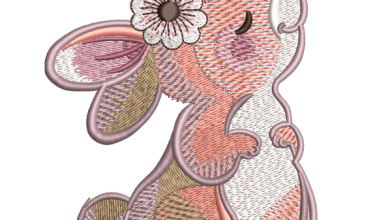
Bloat In Dogs Gastric Torsion and Bloat Symptoms
Bloat in dogs is a very serious condition and is a medical emergency. If your dog is showing symptoms of bloat, get to a veterinarian NOW. If you wait, it could be too late.
Now, in my own small clinic, I can’t do these operations. But, when I worked on bigger Small Animal Surgeries i have had several patients suffering this condition. Pool Team Name
When I had owners on the phone and I saw bloat as a possible situation, I firmly and kindly asked them to come straight to the clinic.
The best results I had, was always on patients getting help and surgery as fast as possible.
Time is important.
What Is Bloat In Dogs?
Bloat in dogs (or gastric dilatation) is quite common. And as you understand now. it’s a medical emergency that needs treatment immediately.
It’s an emergency because your dog’s stomach can suddenly become filled with gas, twist in on itself, and become blocked so that it can’t empty. Bloat In Dogs Gastric Torsion and Bloat Symptoms
The gas filling can also come after the stomach has twisted.
The stomach can twist up to 360 degrees in a clockwise direction. Doing this the esophagus will be closed and difficult to pass. This will add to the gas filling of the stomach.
If the situation continues, vital organs don’t get the blood flow they need and will stop functioning.
Ultimately, your dog will die from this condition and if left untreated, bloat in dogs will ultimately cause blood poisoning and toxic shock, resulting in death.
Symptoms of Bloat In Dogs
Bloat in dogs, or gastric dilatation, will cause extreme discomfort in your dog.
Watch for the following signs of bloat and/or gastric torsion in your dog:
Panting, having difficulty breathing
Excessive drooling, excessive saliva production
Pacing, restlessness, not able or willing to sit down or lie down
A distended abdomen that feels taut to the touch, like a drum
Tries to vomit (retching) several times but nothing is coming
You should be aware that the last symptom, a distended abdomen, isn’t always present with bloat, so you should simply take your dog to the vet immediately if he or she shows any signs of discomfort, excessive panting, and so on.
What Causes Bloat In Dogs?
It’s unclear just why some dogs will experience bloat and others will not. But large dogs (especially those with builds that include narrow, deep chests) are more likely to experience bloat than small dogs who have more barrel-shaped chests.
Some dogs with increased risk of bloat are St. Bernard’s, Great Danes, Irish wolfhounds, Doberman pincers, and Gordon setters, although other dogs, too, can certainly experience bloat.
No matter your dog’s breed, though, if he or she shows symptoms of bloat, get to a vet immediately.
Sometimes the stomach becomes gas-filled but without the twisting. You should also be aware of this condition as treatment is necessary as well.
The signs of this condition would be a distended abdomen, restlessness, and signs of pain.
Other Risk Factors in Bloat In Dogs
Your dog eats fast and swallowing the food. Some dogs are just naturally fast eaters, and in some cases, this is instinctive behavior.
Because survival of the fittest behavior in the pack when docs were wild animals meant those who got food survived and those who didn’t often did not survive,
the fastest eaters got the most food and therefore were most likely to survive.
Of course, your dog doesn’t have to worry about food supply. He or she may simply eat fast as a matter of course because of personality, instinct, stress, and so on.
Dogs can also overeat for the same reason people do, such as that they are bored.
Nonetheless, if your dog tends to gobble his or her food, no matter the breed, you should break your dog of this habit.
One way to do this is to divide portions up into smaller meals so that a small amount of food is all that can be ingested at any one time.
You can also buy special dog foods that will require your dog to chew his or her food very thoroughly. This will also reduce the chances of bloat.
Your dog is active right after eating is another factor.
Dogs often experience bloat if they eat (especially heavily) and then exercise right away. Your dog does need exercise, so don’t skip it. Do schedule your dog’s exercise before a meal, not after, though.
Dogs who appear to worry or be fearful, and have stress, seem to be a greater risk for bloat, also called gastric dilatation, than easy-going, happy dogs do. Bloat In Dogs Gastric Torsion and Bloat Symptoms
If your dog does exhibit a high-strung, fearful, or otherwise stressed-out personality, you can help mitigate this by calming and reassuring your dog; nonetheless, a dog’s personality may simply be part of his makeup such that you can’t entirely manage how stressed out or fearful he is.
Therefore, if your dog is more of a high-strung type, watch him or her even more carefully for signs of bloat than you might if your dog is an easy-going, happy dog by nature.
Curing Bloat
The only permanent cure for bloat is surgery.
As I have said several times throughout this article, if you think your dog is experiencing bloat, get to a vet NOW. Gastric dilatation is life-threatening and needs to be treated immediately.
If I see a possible bloat patient. I will begin to examine the dog as soon I see it. I would look at the cardiovascular system and judge how much the shock had developed by looking at the mucosal membranes in the mouth and listening to the heart.
If it’s typical I would like to begin treatment straight away. Most important IV fluids.
Sometimes the diagnosis demands to take an x-ray. This to confirm that the stomach is distended or has been twisted – if not obvious in the first place.
The next /step is to try to decompress the dog’s stomach by passing a tube down your dog’s throat.
This is not always easy and twisting the tube sometimes helps to pass the torsion of the esophagus. But, it might be impossible to pass. If not, I would insert a needle through the skin into the stomach.
Some local anesthetic will help, but often the dog is so depressed and perhaps not that aware, so it’s not always that necessary.
The main goal is to get the gas out and to decompress the dog’s stomach.
This will make the state of the stomach and spleen much better. As well the circulatory system improves some by doing this decompression. Extra time is gained.
After the stomach has been decompressed, it’s necessary to perform surgery, in order to put the dog’s stomach back into its normal position.
This can be dramatic at times, and I never forget my first gastric torsion operation. So many things to think about and a big gas-filled stomach, blood, and decision are to be made. I will never forget this first one.
Have to admit that the dog died. Not during the operation but after. The dog was brought in far too late to the surgery and was in a terrible state.
After turning back the stomach several techniques exist to attach the stomach to the abdominal wall. This will decrease the risk of it happening again.
Some Final Thoughts
Bloat in dogs is a serious and life-threatening condition, but you can take steps to prevent it; if prevention doesn’t stop an occurrence from happening, you can at least prevent a recurrence by taking appropriate surgical steps.
But this is something you have to discuss together with your regular veterinarian.
You might prevent this to happen by changing your dogs’ feeding habits.
Feeding small meals, use big kibbles food, no physical activity after eating and if your dog seems emotionally unbalanced – consult a proper dog trainer.
Read More: Pool Team Name





